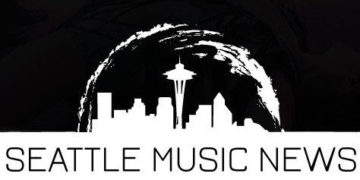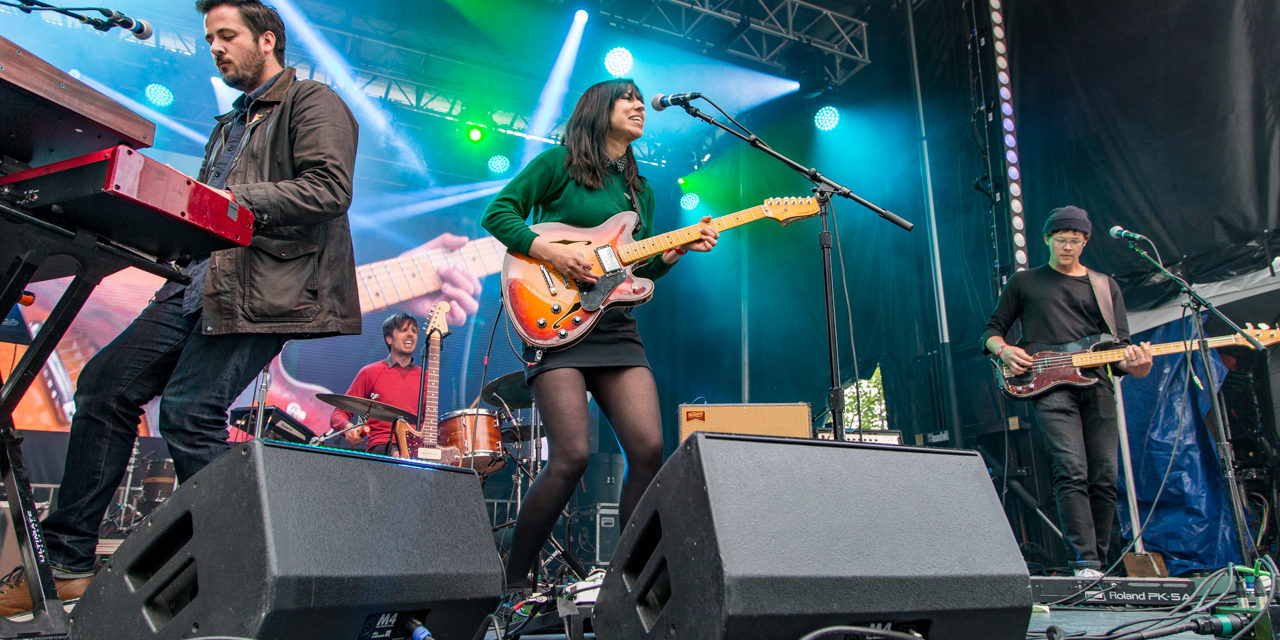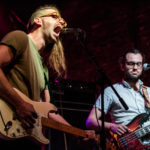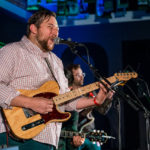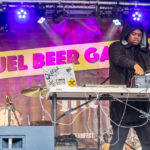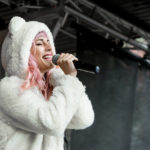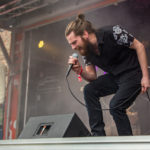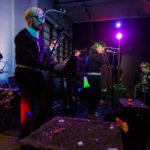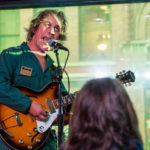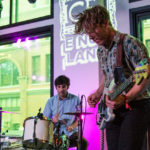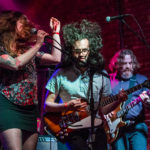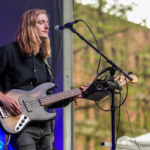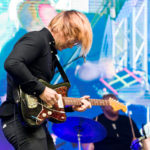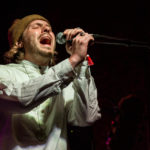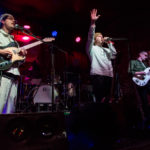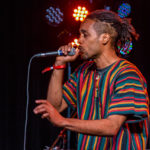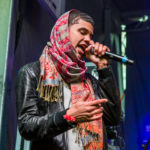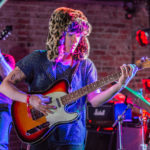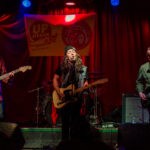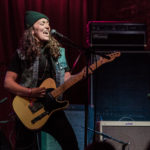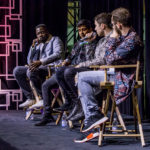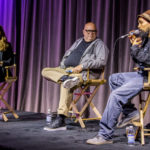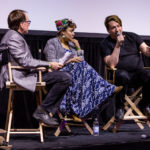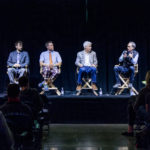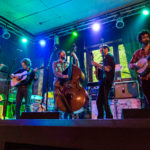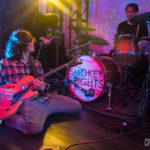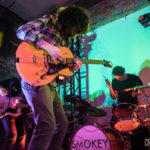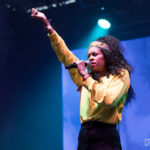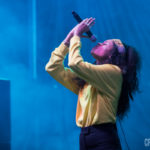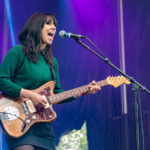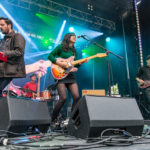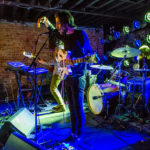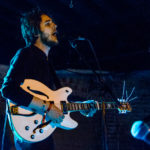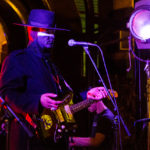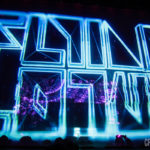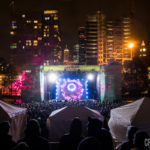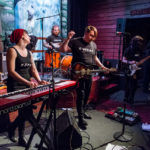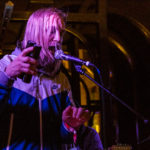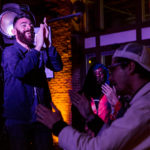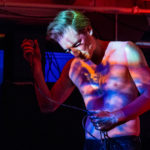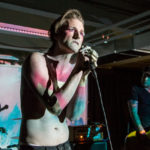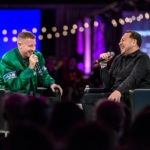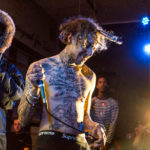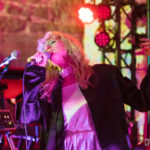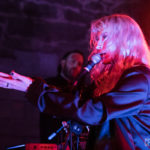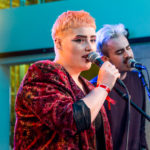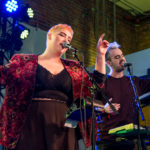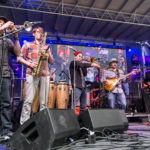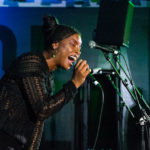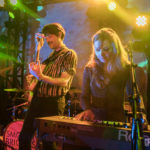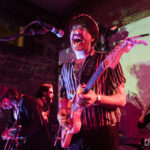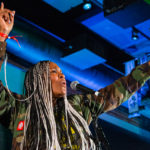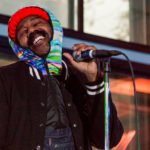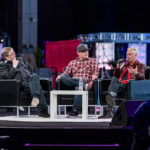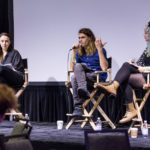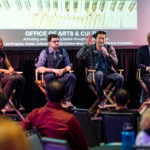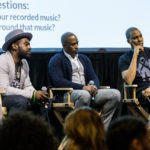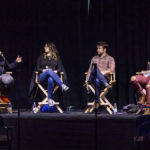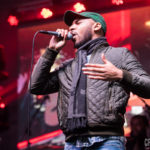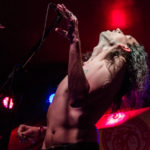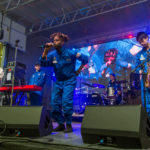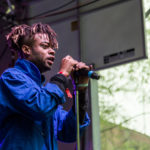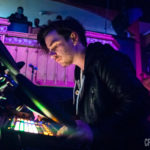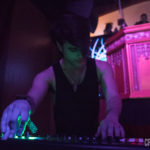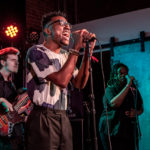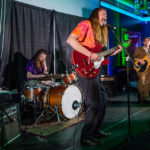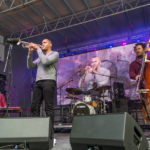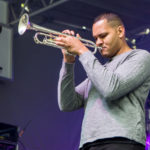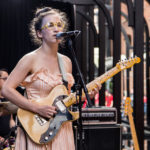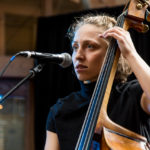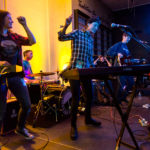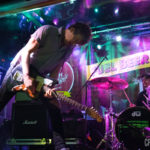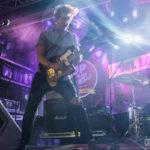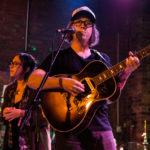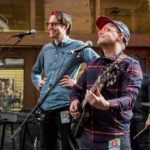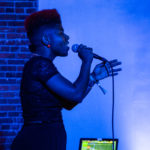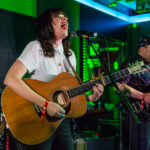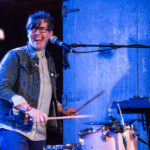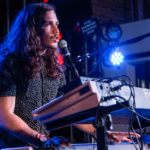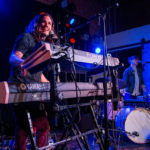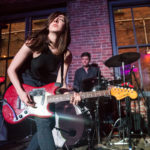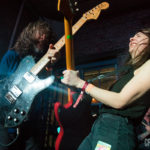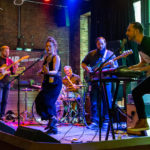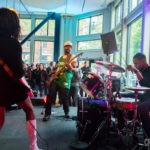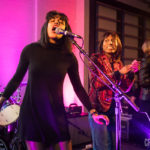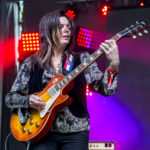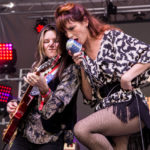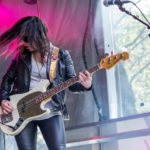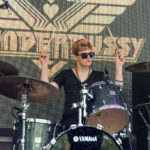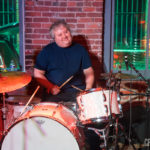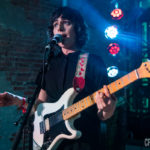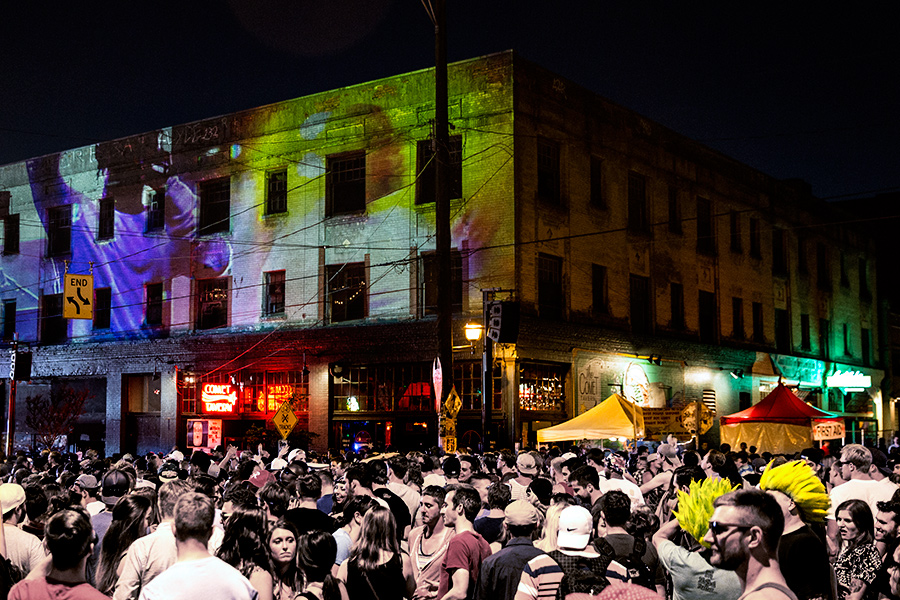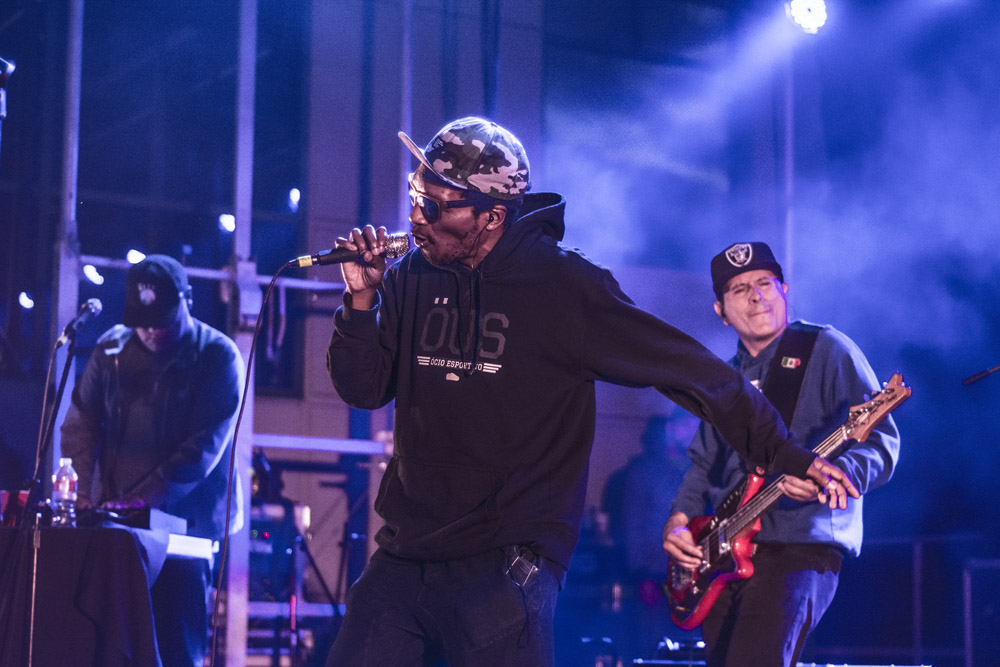Upstream Music Fest & Summit
Seattle, WA
05.11.17 – 05.13.17
Decision paralysis is real as I stand in the middle of Pioneer Square, just trying to remember where all of the Upstream Music Fest venues are, much less who’s actually playing them. Walking the same blocks I do every day of my 9-to-5, they don’t really look any different. I can’t even tell I’m at a music festival. I don’t see any flower crowns, fanny packs, or food trucks.
But it’s early. As I locate the venues–with little help from the unforgiving Upstream app’s map–each marked with a large, branded sticker at the door, the only feeling that registers is that a lot of small local shows just happen to be in the same place at the same time. And I mean a lot. In its inaugural year, Upstream is boasting over 300 artists on more than 25 stages in, let’s say, a 3-block radius. And here’s where the decision making begins and ends.
There’s no possible way to see everything. So I decide not to decide. Just like Upstream itself. Their way of creating a lineup was to invite different people–from media outlets to promoters to record labels–to curate each stage each night. This is both good and bad. Impressively, it spotlights a wider span of genres and artists than your typical festival, but at times it also feels like people also aren’t moving.
Most of the stages stick to a genre, say hip hop or folk. At a “typical” festival, you’re forced outside, at the mercy of hearing one stage from another, being served Ryan Adams while you hold down your front-row spot for Kendrick Lamar. This discovery aspect is somewhat lost at Upstream, where people seem to be finding a stage or two they like and parking it. This certainly isn’t helped by the venues that are still operating as full-service bars and restaurants.
Fortunately, the app has one good function: it tells you who’s coming up next, and where. So I let this dictate what I can make it to, with a clear goal of trying to hear something new. It’s a free-for-all on my patience, and I have to accept that I will likely miss bands I really wanted to see. Sometimes more programming is, in fact, less.
But even at the showcases of artists I’ve never heard of, by the time I leave the set, they are typically packed to the back, which is a good sign. Maybe people really did show up, despite hearing word, even from an employee of one of Paul Allen’s own companies, that people didn’t even know Upstream was happening. I’d wager that a high percentage of attendees are those in a band, managing a band, friends with a band, possibly on a gratis ticket. Perhaps an evaluation of marketing tactics is in order. At least the bands are all being paid. At least they’re being heard. The question is: by whom?
During the first two days, the summit portion of the festival seems to draw halfway decent crowds for keynotes from Quincy Jones and Macklemore. And people are there for the various conversations about the intersection of arts and tech and how to make money off your music these days. But I’m confused as to why the sessions just repeat themselves in the afternoon as if there isn’t enough to talk about. There certainly aren’t enough people in attendance to warrant the duplicate sessions.
The high notes are, thankfully, the artists. If nothing else, Upstream proves just how many good local musicians we have, spanning genres from folk to hip hop, metal to jazz, something for everyone. Sure, there are the acts who’ve been on the tips of local media tongues for the last few years, but there’s a heavy hand of fresh faces as well, hopefully accomplishing the goal of wider exposure.
Was Upstream successful? Who knows. The potential exists for this to be a good thing for both Seattle and its artists with a little refinement. Figure out the goals. Figure out the audience. Figure out the advertising. Fingers crossed that Upstream improves its formula. It was good. But it could be so much better.
Review by Stephanie Dore
Photos by Stephanie Dore and Alex Crick
- Boots To The Moon. Photo by Stephanie Dore.
- Brite Lines. Photo by Stephanie Dore.
- Dead Rich. Photo by Stephanie Dore.
- Dead Rich. Photo by Stephanie Dore.
- Dead Rich. Photo by Stephanie Dore.
- Fabulous Downey Brothers. Photo by Stephanie Dore.
- Fauna Shade. Photo by Stephanie Dore.
- Fauna Shade. Photo by Stephanie Dore.
- Lonely Mountain Lovers. Photo by Stephanie Dore.
- Midnight Faces. Photo by Stephanie Dore.
- Midnight Faces. Photo by Stephanie Dore.
- Motopony. Photo by Stephanie Dore.
- Motopony. Photo by Stephanie Dore.
- Orbitron. Photo by Stephanie Dore.
- Porter Ray. Photo by Stephanie Dore.
- Star Anna. Photo by Stephanie Dore.
- Sundries. Photo by Stephanie Dore.
- Sundries. Photo by Stephanie Dore.
- Upstream Summit. Photo by Stephanie Dore.
- Upstream Summit. Photo by Stephanie Dore.
- Upstream Summit. Photo by Stephanie Dore.
- Upstream Summit. Photo by Stephanie Dore.
- The Warren G. Hardings. Photo by Stephanie Dore.
- Acid Tongue. Photo by Alex Crick.
- Acid Tongue. Photo by Alex Crick.
- AlunaGeorge. Photo by Alex Crick.
- AlunaGeorge. Photo by Alex Crick.
- Deep Sea Diver. Photo by Stephanie Dore.
- Deep Sea Diver. Photo by Stephanie Dore.
- Duke Evers. Photo by Stephanie Dore.
- Duke Evers. Photo by Stephanie Dore.
- Erik Blood. Photo by Stephanie Dore.
- Flying Lotus. Photo by Stephanie Dore.
- Flying Lotus. Photo by Stephanie Dore.
- Gibraltar. Photo by Stephanie Dore.
- Iska Dhaff. Photo by Stephanie Dore.
- Iska Dhaff. Photo by Stephanie Dore.
- J GRGRY. Photo by Stephanie Dore.
- J GRGRY. Photo by Stephanie Dore.
- Macklemore and Elliott Wilson. Photo by Stephanie Dore.
- Mackned. Photo by Stephanie Dore.
- Maiah Manser. Photo by Alex Crick.
- Maiah Manser. Photo by Alex Crick.
- Neu Yeuth. Photo by Stephanie Dore.
- Neu Yeuth. Photo by Stephanie Dore.
- Polyrhythmics. Photo by Stephanie Dore.
- Shaprece. Photo by Stephanie Dore.
- Smokey Brights. Photo by Alex Crick.
- Smokey Brights. Photo by Alex Crick.
- Tiffany Wilson. Photo by Stephanie Dore.
- Tilson XOXO. Photo by Stephanie Dore.
- Ron Jones and Mike McCready. Photo by Stephanie Dore.
- Upstream Summit. Photo by Stephanie Dore.
- Upstream Summit. Photo by Stephanie Dore.
- Upstream Summit. Photo by Stephanie Dore.
- Upstream Summit. Photo by Stephanie Dore.
- Will Jordan. Photo by Alex Crick.
- Constant Lovers. Photo by Stephanie Dore.
- Cosmos. Photo by Stephanie Dore.
- Cosmos. Photo by Stephanie Dore.
- Cuff Lynx. Photo by Alex Crick.
- Cuff Lynx. Photo by Alex Crick.
- GOODSTEPH. Photo by Stephanie Dore.
- Chris King & The Gutterballs. Photo by Stephanie Dore.
- Industrial Revelation. Photo by Stephanie Dore.
- Industrial Revelation. Photo by Stephanie Dore.
- ings. Photo by Stephanie Dore.
- ings. Photo by Stephanie Dore.
- Jenn Champion. Photo by Stephanie Dore.
- Jenn Champion. Photo by Stephanie Dore.
- METZ. Photo by Alex Crick.
- METZ. Photo by Alex Crick.
- Planes On Paper. Photo by Stephanie Dore.
- Ruler. Photo by Stephanie Dore.
- SassyBlack. Photo by Stephanie Dore.
- Shelby Earl. Photo by Stephanie Dore.
- Sisters. Photo by Stephanie Dore.
- Sisters. Photo by Stephanie Dore.
- Sisters. Photo by Stephanie Dore.
- Summer Cannibals. Photo by Alex Crick.
- Summer Cannibals. Photo by Alex Crick.
- Tellers. Photo by Stephanie Dore.
- The Black Tones. Photo by Alex Crick.
- The Black Tones. Photo by Alex Crick.
- Thunderpussy. Photo by Stephanie Dore.
- Thunderpussy. Photo by Stephanie Dore.
- Thunderpussy. Photo by Stephanie Dore.
- Thunderpussy. Photo by Stephanie Dore.
- Wimps. Photo by Alex Crick.
- Wimps. Photo by Alex Crick.
